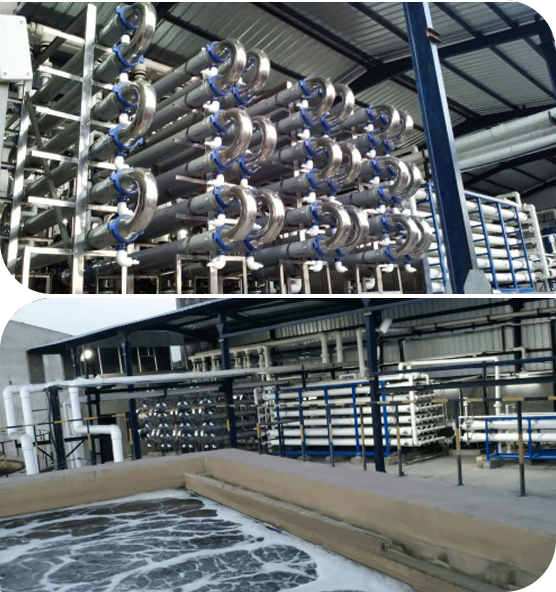
Waterman Engineers Australia is amongst the main producers of Zero Liquid Discharge program. A ZLD program is often a procedure system which is used to eliminate all the liquid squander from the program. The aim of ZLD water treatment is to lower wastewater economically and develop potable drinking water which is match for normal use. Zero discharge procedure is a sophisticated remedy method that comprises ultrafiltration, reverse osmosis, evaporation and fractional electro deionization. And we've been a properly-identified provider of ZLD programs.
In many Industries, for instance electricity, oil & gas, chemical compounds, mining and Other people, a great deal of wastewater is generated that needs to be managed. Conventionally, this discharge of wastewater is done by means of a plant outfall to a floor h2o human body like an evaporation pond, or in some cases deep properly injected. These practices cause many environmental worries by the general public in many regions of the earth, as water can be a scarce resource and its management needs to be monitored. These problems have resulted within the establishment of ZLD processes by quite a few industries to reduce their environmental footprint and improve sustainability. And, Waterman Engineers Australia are greatest ZLD suppliers you can find for this system.
Qualities OF ZERO LIQUID DISCHARGE Technique
The Houses of the Zero Liquid Discharge procedure can vary with regards to the precise design and technologies employed. Even so, some widespread Houses of ZLD devices include things like:
Drinking water Conservation: Considered one of the key goals of ZLD techniques is usually to conserve h2o by reducing the discharge of liquid squander in the surroundings.
Superior H2o Purity: ZLD devices are meant to develop substantial-good quality water that's totally free from impurities and contaminants, that makes them appropriate for use in many industrial procedures.
Versatility: ZLD units will often be made to accommodate a wide selection of enter liquid streams, which makes them multipurpose and appropriate for use in different industries.
State-of-the-art Wastewater Remedy: Zero liquid discharge units use Innovative wastewater therapy techniques to eliminate impurities and contaminants with the effluent, creating significant-high quality drinking water.
Squander Reduction: ZLD methods enable reduce waste by cutting down the quantity of liquid waste that needs to be disposed of and by making a concentrated, good waste materials that could be properly disposed of.
Power Effectiveness: ZLD devices can be Power-intensive due to large Strength prerequisites of evaporation as well as other wastewater remedy processes. Even so, advancements in technological know-how are making Zero liquid discharge systems more Power-efficient and cost-effective.
Waterman Engineers Australia manufactures Zero Liquid Discharge (ZLD) systems designed to take out all liquid squander, aiming to create potable drinking water and reduce environmental influence. Their ZLD systems normally incorporate ultrafiltration, reverse osmosis, evaporation, and fractional electro deionization. Essential technologies used are Slipping Film Brine Concentrators, Forced Circulation Crystallizer, and Some others, by using a two-stage means of pre-focus and evaporation/crystallization to recover and reuse h2o. These methods are adaptable to different industries, emphasizing drinking water conservation, higher h2o purity, waste reduction, and Electrical power effectiveness. Technological specs are varied and customizable, looking at aspects like h2o source, stream charge, and feed h2o high quality.
The necessity for Zero Liquid Discharge (ZLD) systems arises with the necessity to handle environmental fears linked to drinking water scarcity and air pollution. In industries like energy, oil & gasoline, and mining, broad amounts of wastewater are produced. Ordinarily, this wastewater is discharged into bodies of h2o, creating pollution and depleting cleanse h2o resources. ZLD techniques intention to attenuate these impacts by managing and recycling wastewater inside the industrial approach, therefore conserving h2o, lessening squander, and promoting sustainability.
When contemplating the specialized specs of a Zero Liquid Discharge (ZLD) technique, significant features to deal with include the water resource it will treat, the technique's move rate, the caliber of feed h2o, the stages of therapy involved, the Restoration amount of drinking water, strategies for concentrate disposal, supplies of construction, functioning ailments, and technique automation and Handle. These aspects make sure the process's efficiency, sturdiness, and performance in dealing with and recycling industrial wastewater.
Zero Liquid Discharge (ZLD) plants give Added benefits for example water conservation, squander reduction, and pollution avoidance, contributing to environmental sustainability. They're relevant in industries like energy technology, oil and gasoline, substances, and mining, the place they help in taking care of industrial wastewater proficiently, lowering the ecological footprint, and complying with strict environmental restrictions. These methods are important in locations struggling with drinking water scarcity and for industries aiming to improve their sustainability and operational efficiency.
FAQs for your Zero Liquid Discharge (ZLD) method generally address its operational concepts, Value-effectiveness, servicing specifications, environmental impression, applicability throughout numerous industries, and regulatory compliance. These issues help consumers understand the process's benefits, specialized needs, and suitability for his or her precise wastewater administration needs.
1. Zero Liquid Discharge (ZLD) is really a wastewater treatment method course Zld System Manufacturer Zero Liquid Discharge System of action designed to get rid of all liquid waste.
two. The system's parts are affected by the precise industrial approach, wastewater composition, and regulatory necessities.
three. Effluent treatment method vegetation eliminate pollutants from textile effluents to forestall environmental contamination.
four. Strengths include things like drinking water conservation, pollution reduction, and regulatory compliance.
5. The goal is to attenuate environmental effects by recycling water and decreasing waste.
six-9. Effluent therapy plants are levels in wastewater treatment method: Principal (physical separation), secondary (Organic cure), and tertiary (State-of-the-art remedy).
10. Device operations include filtration, sedimentation, Organic treatment method, and disinfection.
11. Restricting parameters are aspects that impact the treatment's effectiveness, like pH and contaminant concentration.
twelve. Style considerations include things like circulation rate, effluent composition, and ideal top quality of treated drinking water.